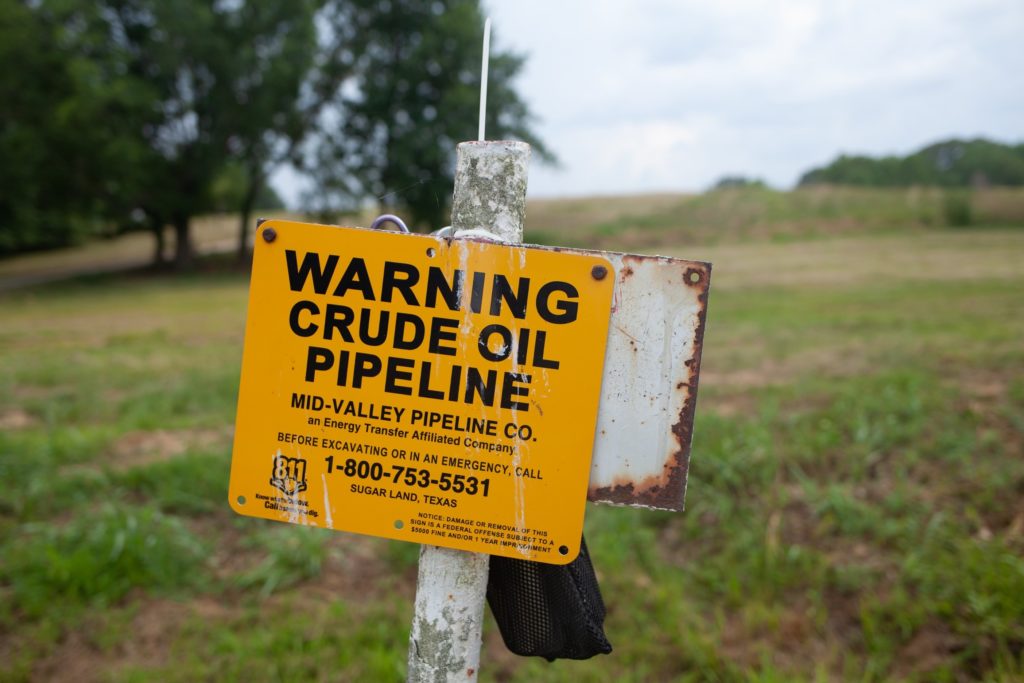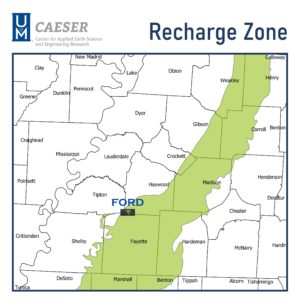
A pipeline that crosses eight states burst in Tennessee last week and leaked more than 200,000 gallons of crude oil into the rural town of Henderson – making it the second-largest crude oil spill in state history.
The Mid-Valley Pipeline Company, a roughly 1,000-mile line, is the source of the leak. The pipeline dumped about 4,800 barrels of crude oil into the surrounding area in Chester County, according to the Department of Transportation’s Pipeline and Hazardous Safety Materials Administration, or PHMSA, which is investigating the cause of the incident and potential compliance issues.
The spill occurred on June 29 at 12:34 p.m. and the release was stopped on June 30 at about 11:40 a.m. through the installation of a clamp on the damaged pipe, according to the National Response Center report.
It is unclear how fast the pipeline operator shut down the flow of oil after the leak was detected. That information should be revealed soon, however, as the pipeline company is federally required to submit a report to PHMSA within 30 days.
“Until they shut those valves down, oil is going to continue leaking out of that pipeline. When you have a spill of this size, it often means it was not shut down very quickly,” said Bill Caram, director of Pipeline Safety Trust, a watchdog group.
 Courtesy Protect Our Aquifer
Courtesy Protect Our Aquifer The town of Henderson in Chester County, the red dot above, sits just outside the recharge zone for the Memphis Sand Aquifer.
The spill leaked directly into Horse Creek. That flows into the South Forked Deer River, which then flows into the recharge zone of the Memphis Sand Aquifer, Tennessee’s largest aquifer.
At this time, officials have said that the oil spill was stopped before it reached the river. Emergency responders closed dams and placed buoys to catch the oil, which floats on water, in the creek.
“If the oil spill was to continue flowing with the path of water, it could make its way into the South Forked Deer River and into the Memphis Sand Aquifer recharge zone. But at this stage, it does not appear to be impacting the aquifer at all,” said Sarah Houston, executive director of Protect Our Aquifer, a Memphis-based environmental nonprofit.
A mower caused the breach
PHMSA reported that a worker ruptured the pipeline with a lawn mower, which suggests that the pipeline may have been above ground, according to Caram.
“I really have a hard time imagining that a mower could damage it to this degree without that pipeline being exposed or at least extremely close to the surface,” Caram said.
The Tennessee Department of Environment and Conservation is helping clean up the spill along with the Environmental Protection Agency. TDEC will be monitoring water quality weekly for pollutants like benzene, toluene, ethyl benzene, xylene and extractable petroleum hydrocarbons. The state may order additional water quality monitoring as the cleanup progresses, according to TDEC.
 Courtesy Protect Our Aquifer
Courtesy Protect Our Aquifer Emergency responders placed buoys in Horse Creek to stop the oil from flowing into other waterways.
“No water contact advisories have been issued at this time,” TDEC spokesperson Kim Schofinski said in a statement.
Gov. Bill Lee, asked about his administration’s response to the spill, deferred to TDEC.
“Certainly the department is aware of that and has the responsibility to engage,” Lee said.
Spill comes amid new law limiting local input on pipelines
This summer, Gov. Lee signed a bill into law that preempts local governments from taking action that would prohibit fossil fuel development or expansion. The law also prevents communities from blocking the siting of the infrastructure.
Houston suggested that this incident underscores how important it is for local communities to have a say in what infrastructure is built their town – and raises questions about the maintenance.
“We really need to know the potential impacts of some of these long-lasting infrastructure, because their lifespan is usually 50 years or less,” Houston said. “This could be a very old, non-maintained pipeline that could potentially impact drinking water between here and where it’s coming from in Texas.”
The Mid-Valley Pipeline Company transmission route starts in Texas, passes through Louisiana, Arkansas, Mississippi, Tennessee, Kentucky and Ohio, and ends in Michigan. Mid-Valley Pipeline Company is owned by Energy Transfer Partners.
Crude oil spills of this magnitude are rare. The largest crude oil spill recorded in the state was an approximately 357,000-gallon spill in Clarksville in 1988, and it was also on the Mid-Valley Pipeline Company system, according to PHMSA data that dates back to 1986.
 Courtesy University of Memphis
Courtesy University of Memphis The recharge zone for the Memphis Sand Aquifer dips into Chester County.
This latest spill may have avoided the aquifer — narrowly, as the aquifer actually crosses into Chester County — but it will impact the local ecosystem along Horse Creek.
“Creeks have delicate ecosystems, and a spill like this can really be devastating. It can take a very long time for a creek to recover, and in many cases it may never fully recover,” Caram said.

